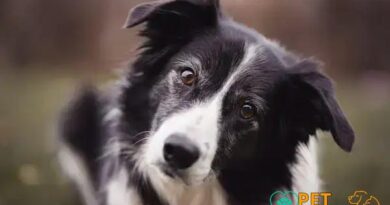What is Incompatibility
What is Incompatibility in Dogs?
Incompatibility in dogs refers to the inability of two or more dogs to coexist peacefully due to behavioral, temperamental, or physical differences. This phenomenon can manifest in various forms, including aggression, anxiety, and stress, often leading to conflicts that can be detrimental to the well-being of the animals involved. Understanding the nuances of incompatibility is crucial for dog owners, trainers, and breeders alike, as it can significantly impact the dynamics within a household or a social setting.
Types of Incompatibility
There are several types of incompatibility that can arise among dogs. These include social incompatibility, where dogs may not get along due to differing social skills or play styles; territorial incompatibility, which occurs when dogs feel threatened by the presence of others in their space; and resource incompatibility, where competition for food, toys, or attention leads to conflict. Recognizing these types can help owners manage their dogs’ interactions more effectively.
Signs of Incompatibility
Identifying signs of incompatibility is essential for preventing potential conflicts. Common indicators include growling, barking, snapping, or even physical fights. Additionally, signs of stress such as excessive panting, hiding, or attempts to escape can also signify that a dog is uncomfortable in the presence of another. Observing these behaviors closely can help owners intervene before a situation escalates.
Causes of Incompatibility
The causes of incompatibility among dogs can be varied and complex. Factors such as genetics, early socialization experiences, and past traumas can all play a role in shaping a dog’s behavior. For instance, a dog that has not been properly socialized may struggle to interact with others, leading to misunderstandings and conflicts. Understanding these underlying causes is vital for addressing incompatibility issues effectively.
Managing Incompatibility
Managing incompatibility requires a proactive approach from dog owners. This may involve gradual introductions, supervised interactions, and the use of positive reinforcement techniques to encourage desired behaviors. In some cases, professional training or behavioral consultations may be necessary to help dogs learn to coexist peacefully. Consistency and patience are key components in successfully managing incompatibility.
Preventing Incompatibility
Preventing incompatibility starts with early socialization and training. Exposing puppies to a variety of environments, people, and other animals can help them develop the social skills needed to interact positively with others. Additionally, teaching basic obedience commands can establish a foundation for good behavior, making it easier for dogs to navigate social situations without conflict.
Impact of Incompatibility on Dog Owners
The impact of incompatibility extends beyond the dogs themselves, affecting their owners and families as well. Conflicts between dogs can lead to stress and anxiety for owners, as they may feel responsible for managing the situation. Furthermore, the need for separate living arrangements or constant supervision can create logistical challenges and emotional strain within the household.
Incompatibility and Dog Breeds
Different dog breeds may exhibit varying levels of compatibility with one another. Some breeds are naturally more sociable and adaptable, while others may have strong territorial instincts or specific behavioral traits that can lead to incompatibility. Understanding breed characteristics can help owners make informed decisions when introducing new dogs into their homes, potentially reducing the risk of conflicts.
When to Seek Professional Help
If incompatibility issues persist despite efforts to manage them, it may be time to seek professional help. A certified dog trainer or behaviorist can provide valuable insights and strategies tailored to the specific needs of the dogs involved. Early intervention can often prevent more serious behavioral problems from developing, ensuring a harmonious environment for both dogs and their owners.




